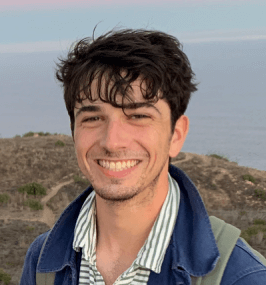
Photo EssayPhotos: In the middle of Times Square, a Holocaust cattle car
A striking new Holocaust exhibit hopes to raise awareness for antisemitism and all kinds of hatred
Passersby stroll beside Southern NCSY’s traveling cattle car exhibit: “The Cattle Car: Stepping In and Out of Darkness.” Photo by Matthew Litman
Photo EssayPhotos: In the middle of Times Square, a Holocaust cattle car
A striking new Holocaust exhibit hopes to raise awareness for antisemitism and all kinds of hatred
In Times Square, below bright, high-definition screens advertising Coca-Cola and T-Mobile, sits a 27-foot wooden replica cattle car similar to those used to shuttle millions of Jews and others to concentration camps.
“Times Square is iconic. This is the crossroads of the world. So if your goal is to increase awareness, this is the place you want to be,” said Todd Cohn, executive director of Southern NCSY, a chapter of the national Jewish youth organization founded by the Orthodox Union.
The traveling cattle car, which contains a video exhibit on the horrors of the Holocaust, is part of Southern NCSY’s Hate Ends Now tour, which aims to combat antisemitism and all forms of hate. In a little over a year, the cattle car has been to five states, 65 schools, and been seen by at least 60,000 people. To travel between campuses and venues, it gets hitched to a Ford 250 pick-up truck.
After the cattle car’s sliding door is closed, viewers are held in near-darkness, the slats of the walls illuminated only by projected visuals filmed and edited by Sagi Kahane-Rapoport, a Canadian-American filmmaker who originated the idea for the exhibit together with Jordana Lebowitz, executive director of ShadowLight, a Holocaust education organization.
For the exhibit, Kahane-Rapoport interviewed two Holocaust survivors, Hedy Bohm and Nate Leipcinger, and made a short film reenacting the experiences they related in their testimonies. Through a technique called projection mapping, a series of projectors ensure the walls of the cattle car are covered in one seamless, moving image.
For those who experienced it in Times Square, the effect was profound. “Seeing this makes me remember how many people didn’t get to walk out of that cattle car,” said Akiva Daitchman, who came to see the exhibit after seeing posts about it on social media. “And we just walked out.”
1 / 6
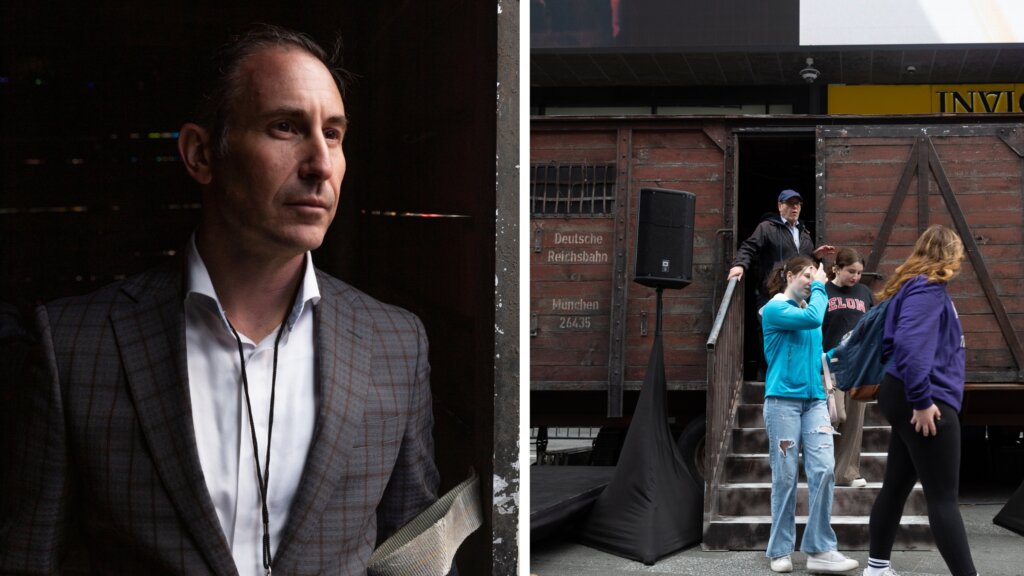
Photo by Matthew Litman
“We wanted to make something tangible,” said Todd Cohn, the executive director of Southern NCSY, that could help students “understand what transpired with our ancestors, our grandparents, with our great-grandparents.”
2 / 6
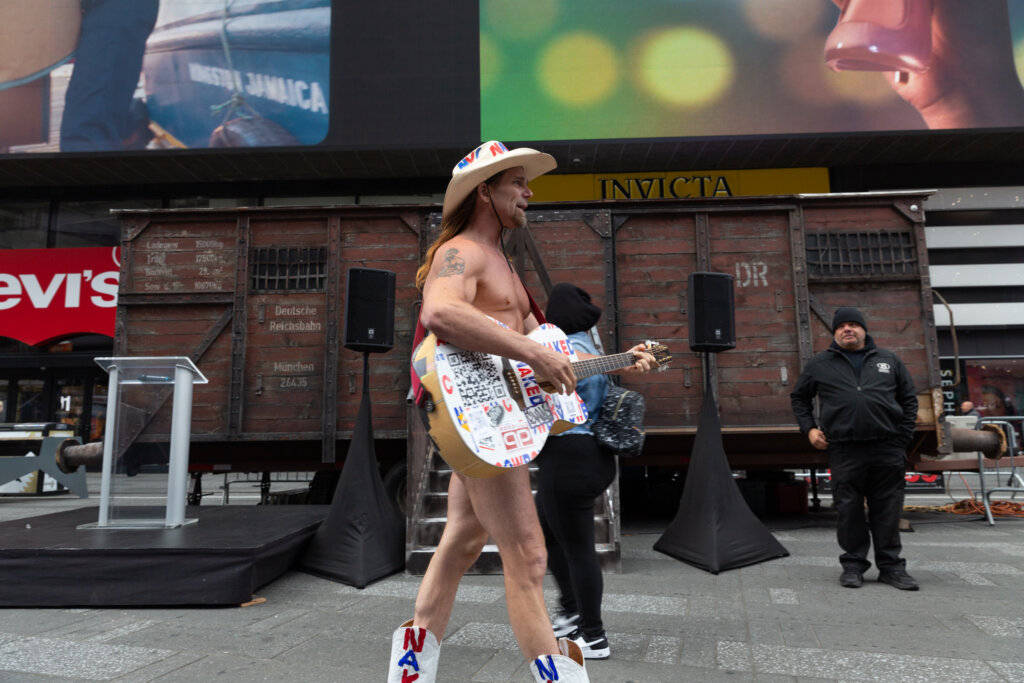
Photo by Matthew Litman
Amid the hustle and bustle of Times Square, Southern NCSY’s traveling cattle car exhibit was graced by the presence of The Naked Cowboy. He asked what the car was for, but became distracted before he could get an answer.
3 / 6

Photo by Matthew Litman
Students and passersby explored the exhibit throughout the morning and afternoon. Standing beside the cattle car, a student from a local performing arts school said she had been ostracized at school for being Jewish.
4 / 6
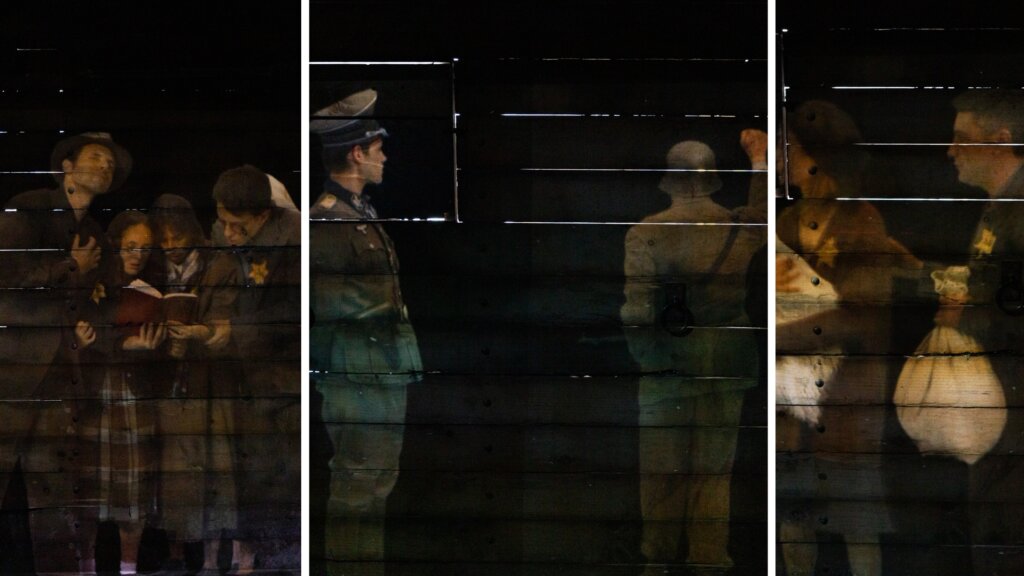
Photo by Matthew Litman/Forward
A series of images projected onto the walls of the cattle car, a replica that Jordana Lebowitz, the exhibit’s co-creator, found through a Toronto prop company. Visitors stand in the cattle car for the entire 20-minute film.
5 / 6
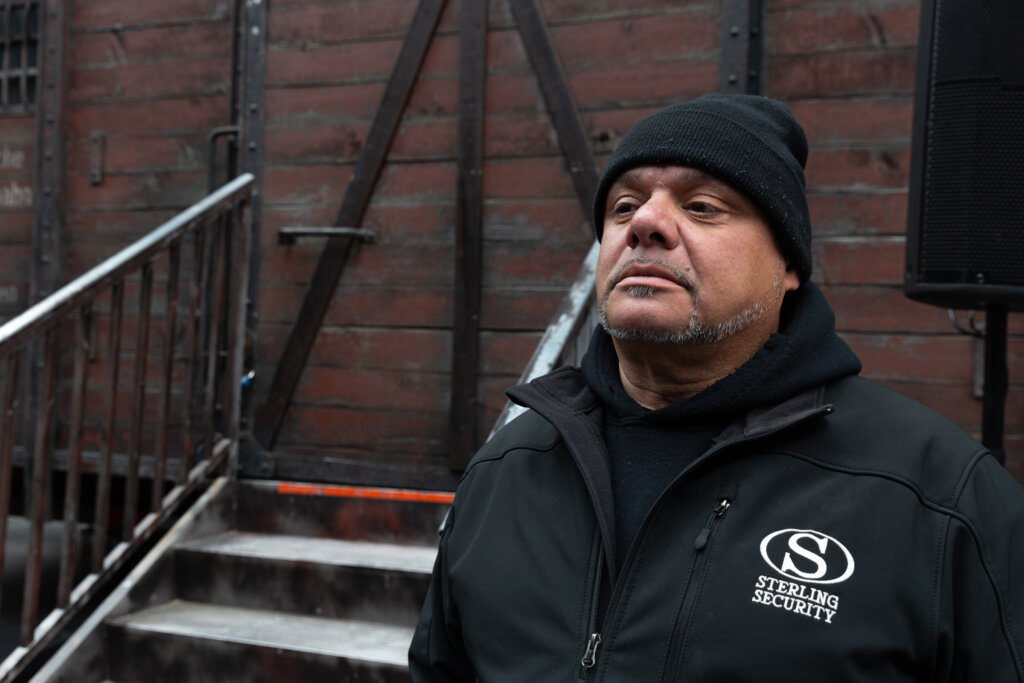
Photo by Matthew Litman
William Rodriguez was hired to provide security for the exhibit. He had been there since 5 a.m. and experienced the exhibit for himself in the afternoon. “Who would think that that many people could be murdered by a thought,” he wondered afterwards.
“We shouldn’t be hating each other, no matter what,” Rodriguez said. “And I believe that 100%. I don’t hate nobody. We’re all here on earth for a reason, no matter what.”
6 / 6

Photo by Matthew Litman
The exhibit’s visuals were filmed and edited by Canadian-American filmmaker Sagi Kahane-Rapport. He said the visual aspects of the exhibit, which involved interviewing two Holocaust survivors, took two years to complete.
